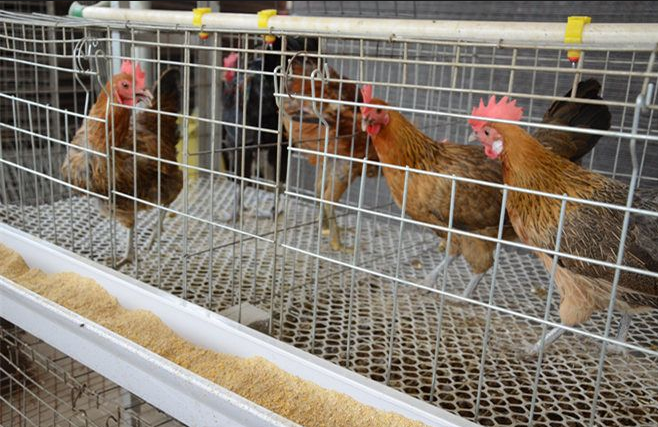Chicken energy and protein
Jun 11, 2019
The tissues and organs of various parts of the chicken, such as feathers, bones and chicken products, eggs and meat are all derived from the nutrients in the feed. Chickens need energy and protein in their nutrients in their cages.
(1) Energy needs, all physiological processes of the chicken, such as exercise, excretion, reproduction, etc., are inseparable from energy. Energy comes from carbohydrates, fats and proteins in the feed. In nutrition, we divide energy into total energy (GE), digestion energy (DE), and metabolic energy (ME). In the nutrient and feed mix of chickens, it is expressed by metabolic energy (ME), which refers to the energy converted in chickens, and its unit is kilojoules per kilogram (kJ/kg), or megajoules per kilogram (MJ/kg). It represents the energy contained in each kilogram of compound feed or raw material. Energy feeds include cereals and roots and shoots, which are rich in starch and sugar. Commonly used are corn, barley, wheat, rice and so on. Among them, the largest amount of corn is used, and it contains a metabolic energy of about 14.07 MJ/kg.

(2) The need for protein, protein is the main component of chicken and chicken products - chicken and eggs. The protein is composed of more than 20 kinds of amino acids. The protein is digested in human chicken and can be absorbed after being converted into amino acids by various enzymes. Amino acids can be divided into essential amino acids and non-essential amino acids. The former can only be obtained from feed, and the latter can be synthesized in chicken or transformed from other amino acids. Among the essential amino acids, some amino acids, if lacking, will affect the absorption and utilization of other amino acids, thereby affecting the growth and production performance of chickens. These amino acids are called limiting amino acids. Lysine, methionine and tryptophan are the main limiting amino acids of chickens, especially lysine and methionine are easily lacking in feed. Therefore, it is important to note that these two types of amino acids are added to the feed. In practice, due to the limited content of these two types of amino acids in the feed, Peruvian fishmeal, which is high in content, accounts for only 8.7% and 2.9% of protein. Generally, the addition of a small amount of synthetic amino acids to feed production is better and the cost is lower. Protein feed can be divided into animal protein feed, such as fish meal, meat meal, feather meal, silkworm cocoon and blood meal; plant protein feed, such as beans, soybean meal, rapeseed meal (cake) and peanut cake, among which soybean meal contains higher The amino acid and crude protein are 2.9% and 44%, respectively, and the most used, generally accounting for 15% to 25% of the feed.
Pre:Chicken farming technology
Next: Nutrition Principles of Chicken Cage

